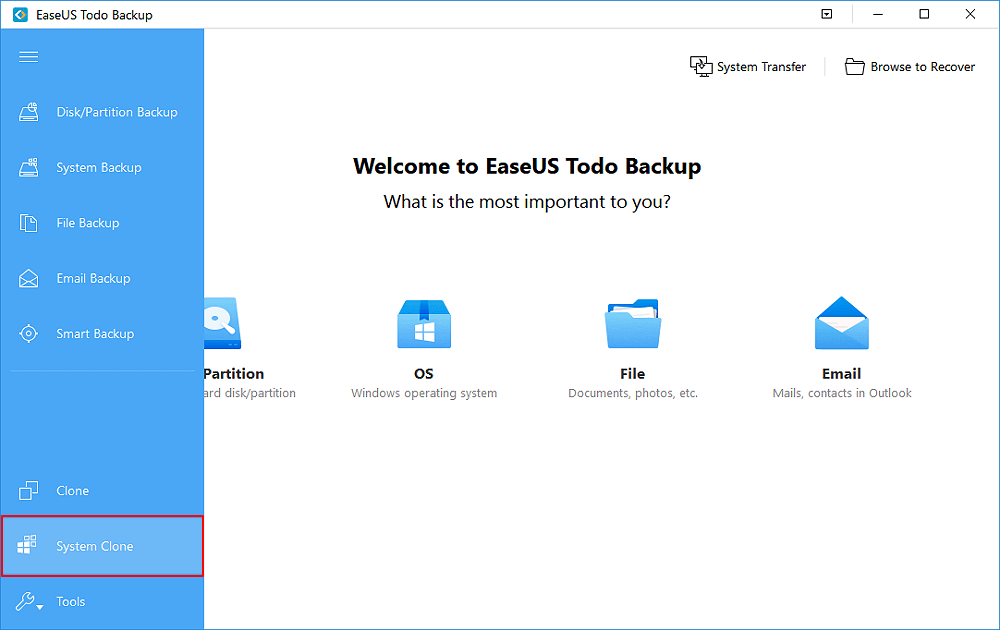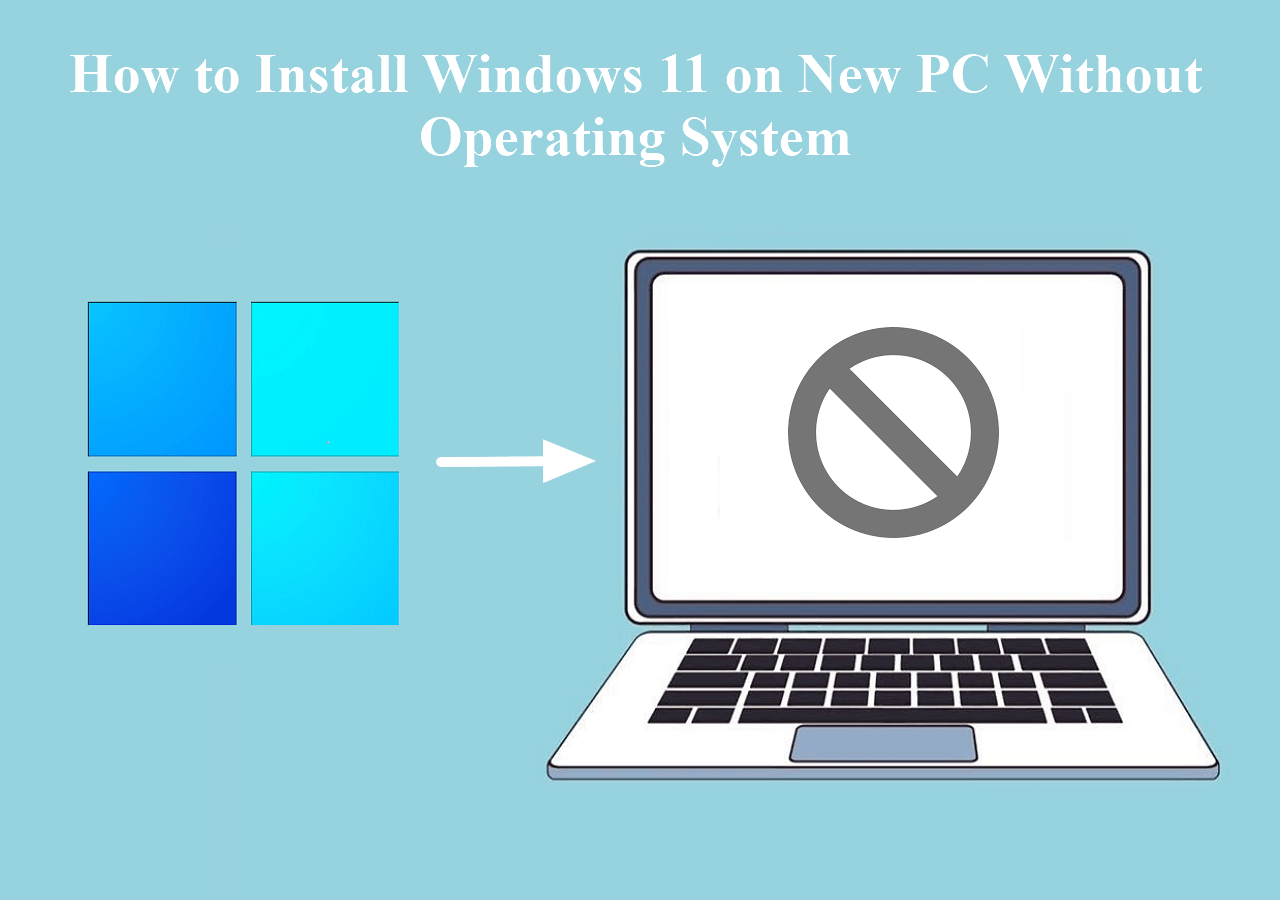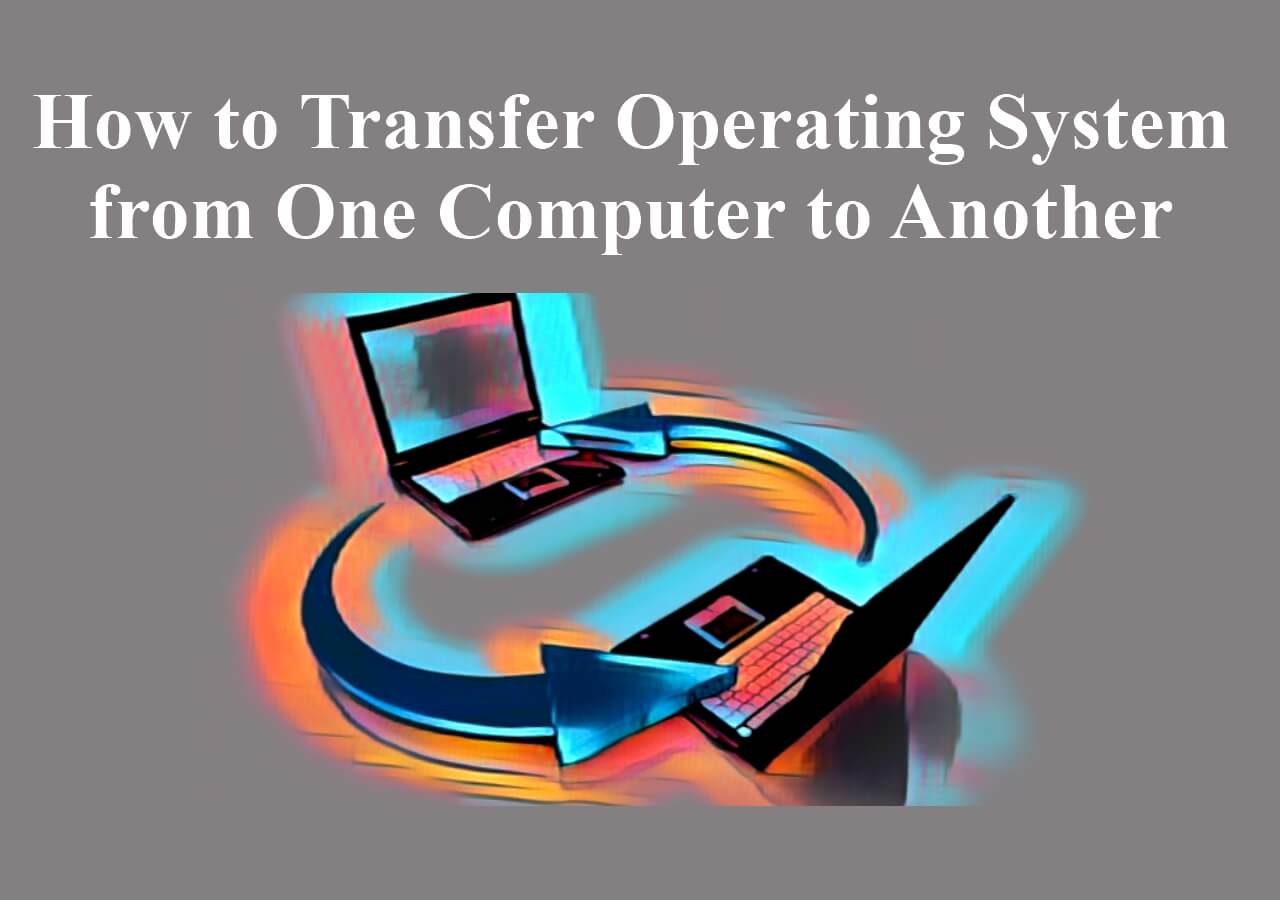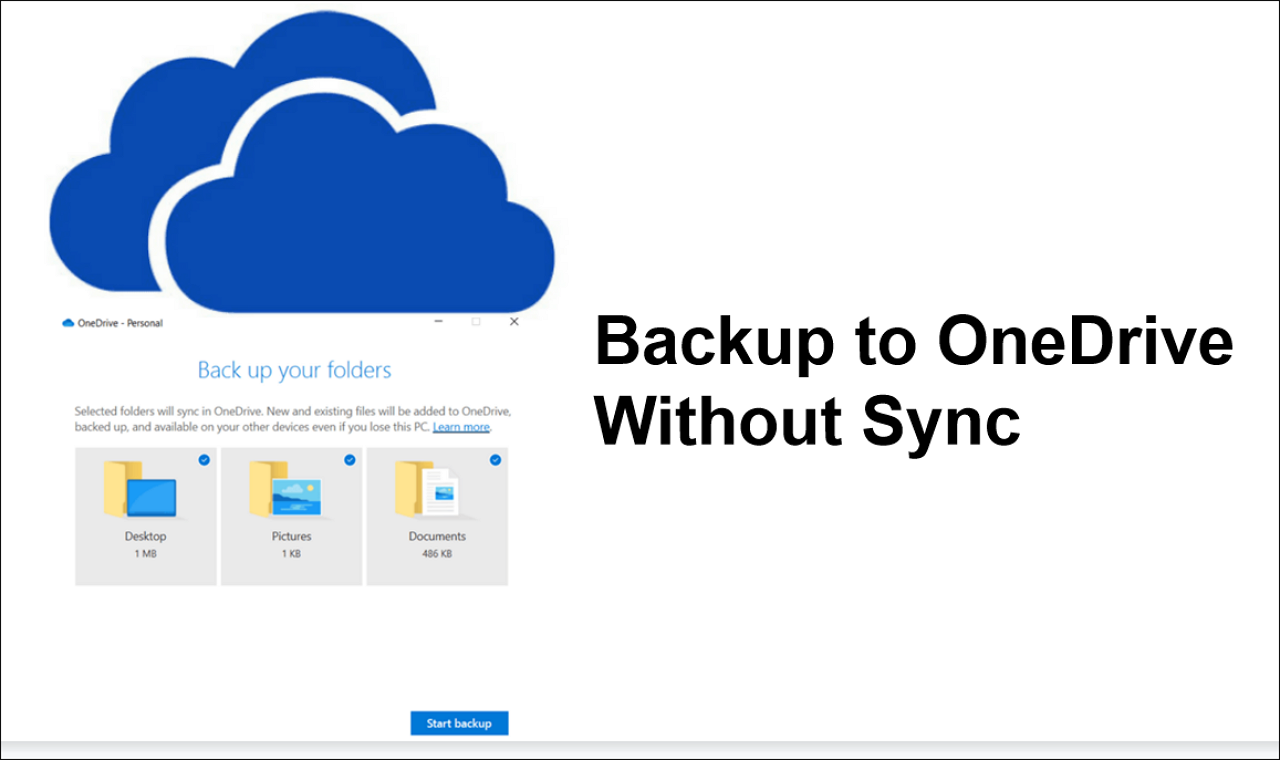Page Table of Contents
- 🙍♂️User case:
- "I'm struggling to find a way to move my files to an external hard drive without copying them. The situation is that, as a graphic designer, I have many important files on my computer that I want to back up on an external hard drive for extra security. However, every time I try to duplicate the files, it ends up creating additional copies on both my computer and the external hard drive. This not only takes up unnecessary space but also becomes confusing to manage. I'm in need of a solution that allows me to duplicate files to the external hard drive without creating extra copies on my computer." - post from Reddit
Moving files to external devices is a great way to protect the safety of your vital data if your computer crashes, your hard drive dies, or your machine is infected with viruses. Furthermore, putting files on an external hard drive allows you to take your data with you and use it whenever you need it. After transferring files to an external hard drive, you can delete the originals to free up storage space for additional material.
Copy and paste is the simplest option, and most people will use it. However, according to customer feedback, this option may make unnecessary copies on the computer and may occasionally lose data during the process, therefore they are looking for other, more efficient alternatives. In this article, we will explore three alternative methods that allow you to move files to external hard drive without copying seamlessly.
3 Alternative Ways to Move Files to External Hard Drive Without Copying
Before diving into these three alternative methods, let's have a look at the chart comparing their effectiveness and difficulty.
| Methods | Effectiveness | Difficulty |
|---|---|---|
| 🥇EaseUS Todo Backup | Smoothly and easily back up files to external hard drives with simple clicks. | ⭐ |
| File History | Back up files to an external hard drive automatically, but requires complex settings. | ⭐⭐⭐ |
| Backup and Restore | Auto backup files to an external hard drive, but it needs multiple steps. | ⭐⭐⭐ |
Way 1. Easily and Automatically Backup Files to External Drive With Freeware
If you want to find a quick and easy solution to move files or other data from your computer to an external hard drive, EaseUS Todo Backup Free is the best option. It is an overall backup and recovery program that allows you to back up files, disks, partitions, and systems to any location, including external hard drives, USB, NAS, cloud services, etc.
Compatible with various file types, it can move and transfer photos, videos, Word files, PowerPoint files, Excel files, and other file formats to an external hard drive for free. So, you don't need to your files will get lost.
EaseUS Todo Backup comes with the scheduled backup feature, which means you can set an automatic backup plan, and the software will automatically save specified files to the target location at regular intervals.
Another attractive point of EaseUS Todo Backup is its differential backup and incremental backup options. Adopting these advanced features, you can save more storage space for other information.
Secure Download
Now, download the tool and follow the steps to move your important files to the external hard drive.
Step 1. Click "Select backup contents" to initiate a backup.
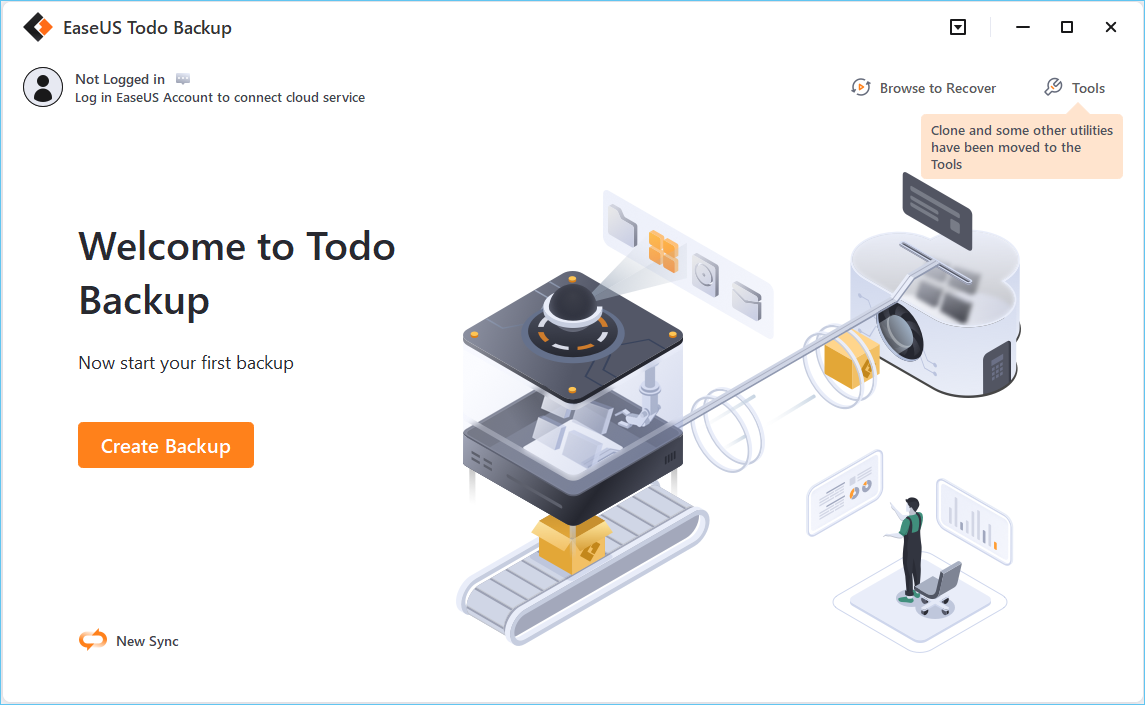
Step 2. There are four data backup categories, File, Disk, OS, and Mail, click File.
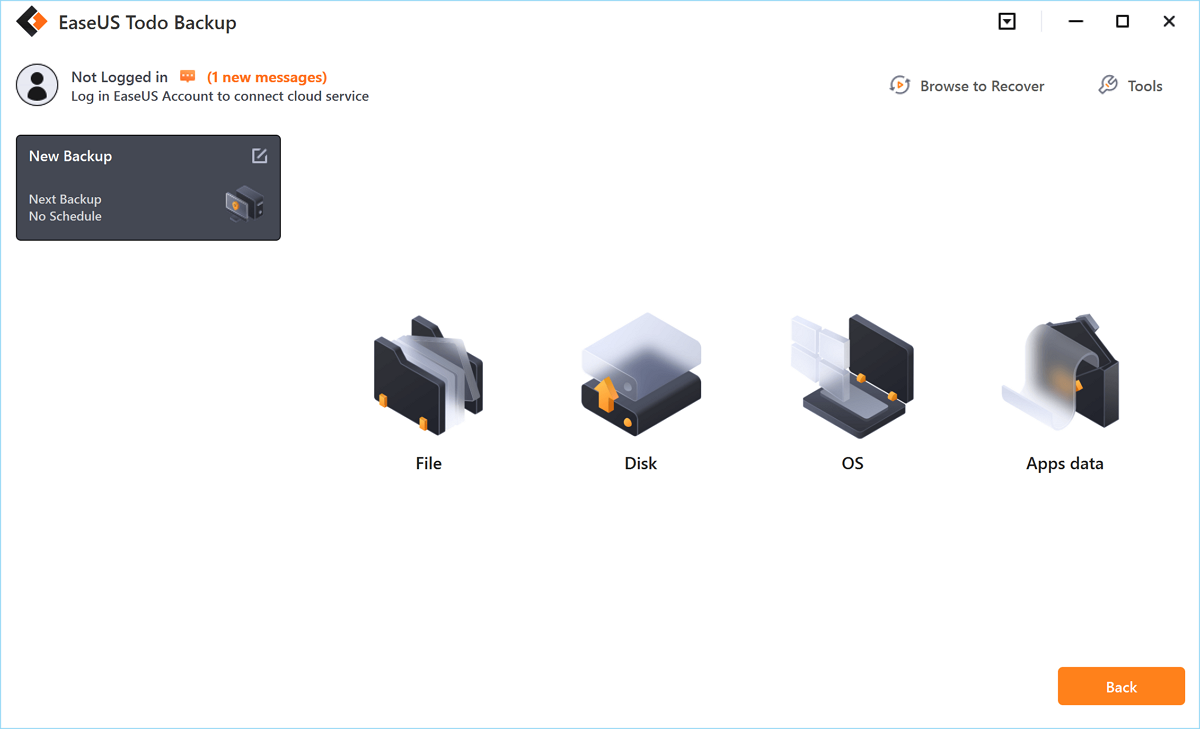
Step 3. Local and network files will be displayed on the left side. You may extend the directory to choose which files to back up.
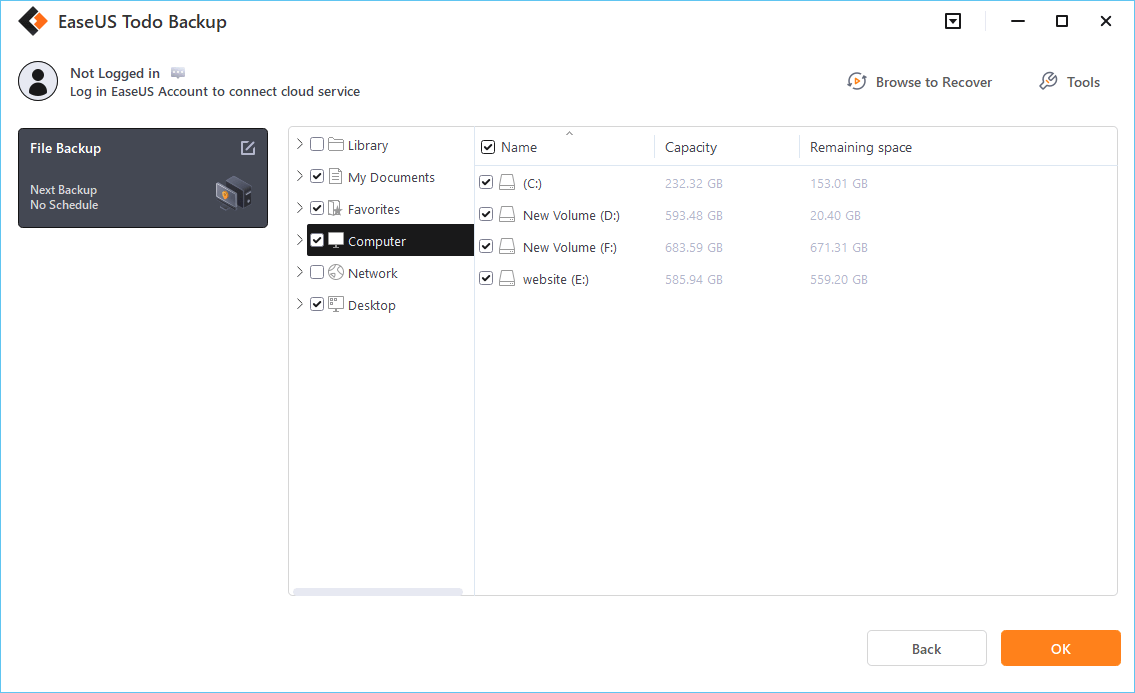
Step 4. Select the location where you want to store the backup by following the on-screen instructions.
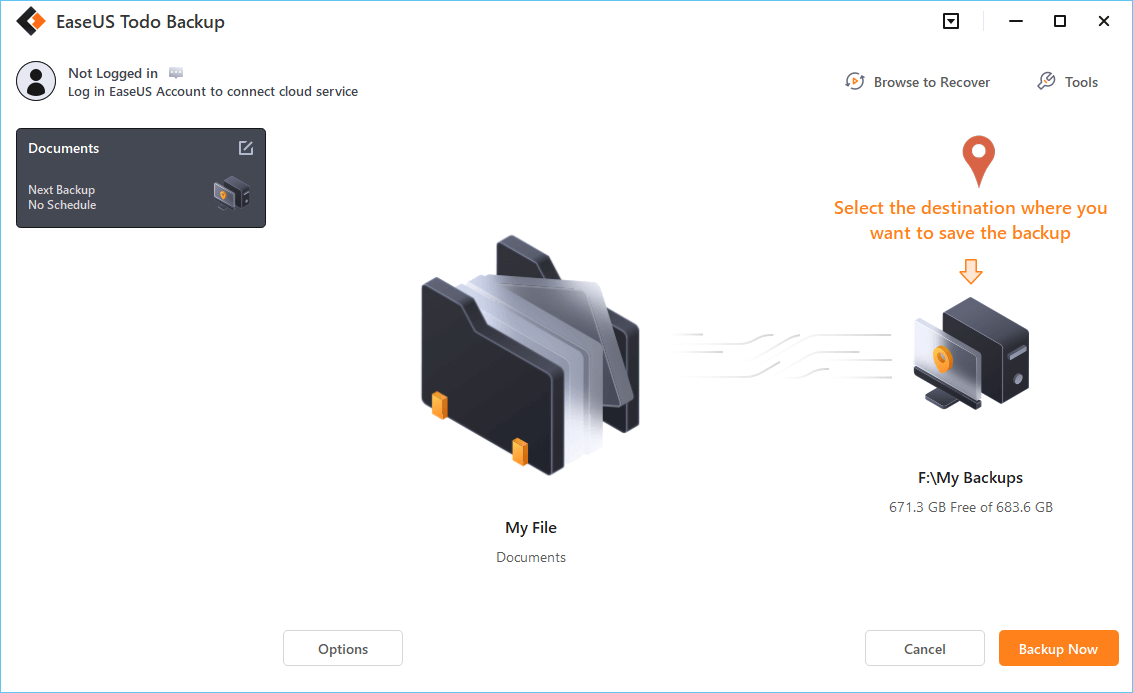
Click "Options" to encrypt the backup with a password in "Backup Options," and to setup a backup schedule and choose to initiate a backup at a certain event in "Backup Scheme." There are a variety of other customization options available for the backup process.
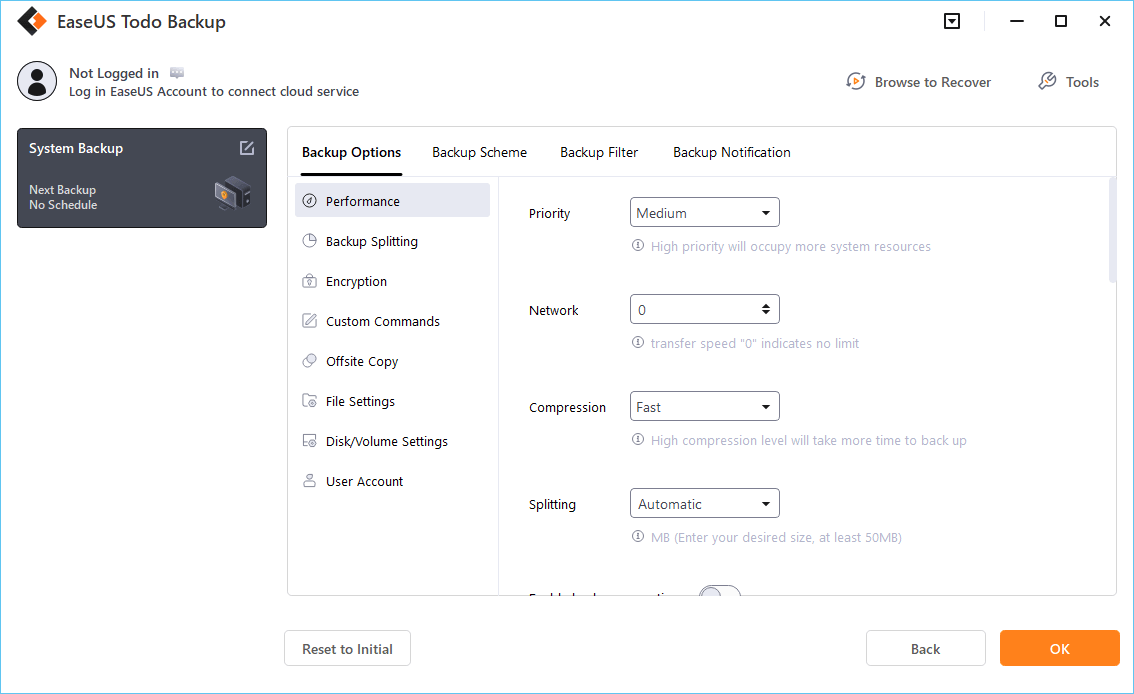
Step 5. You may save the backup to a local disk, EaseUS' online service, or a NAS.
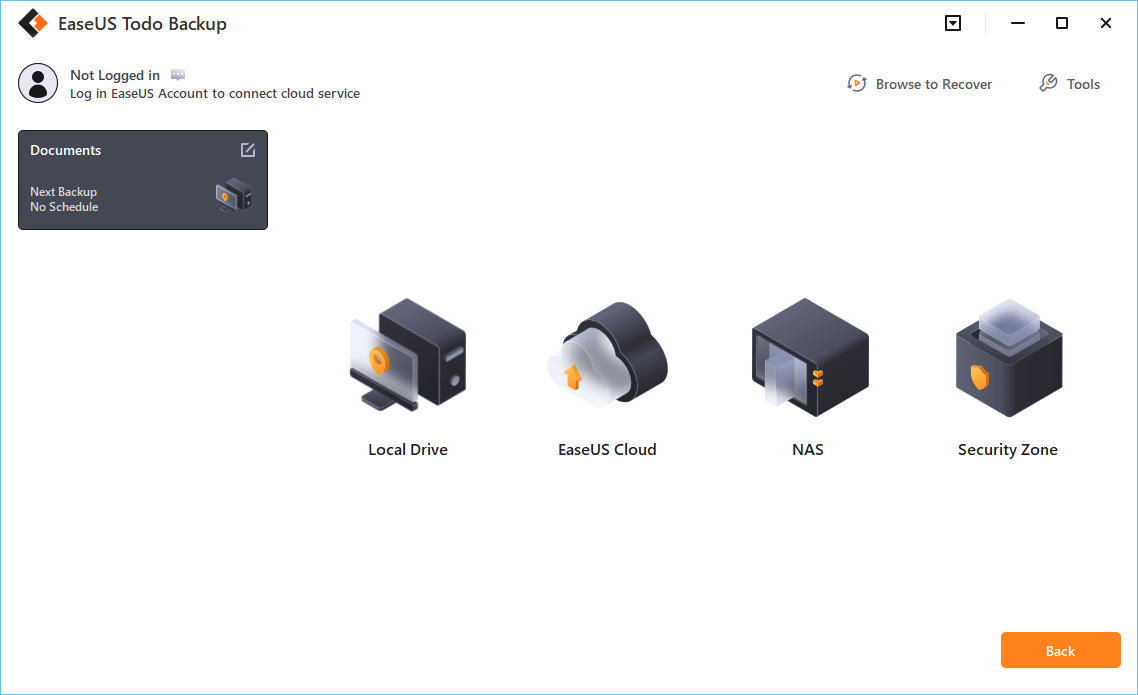
Step 6. EaseUS Todo Backup enables customers to back up data to a third-party cloud drive and its own cloud drive.
If you want to back up data to a third-party cloud drive, choose Local Drive, scroll down to add Cloud Device, add your account, and then log in.
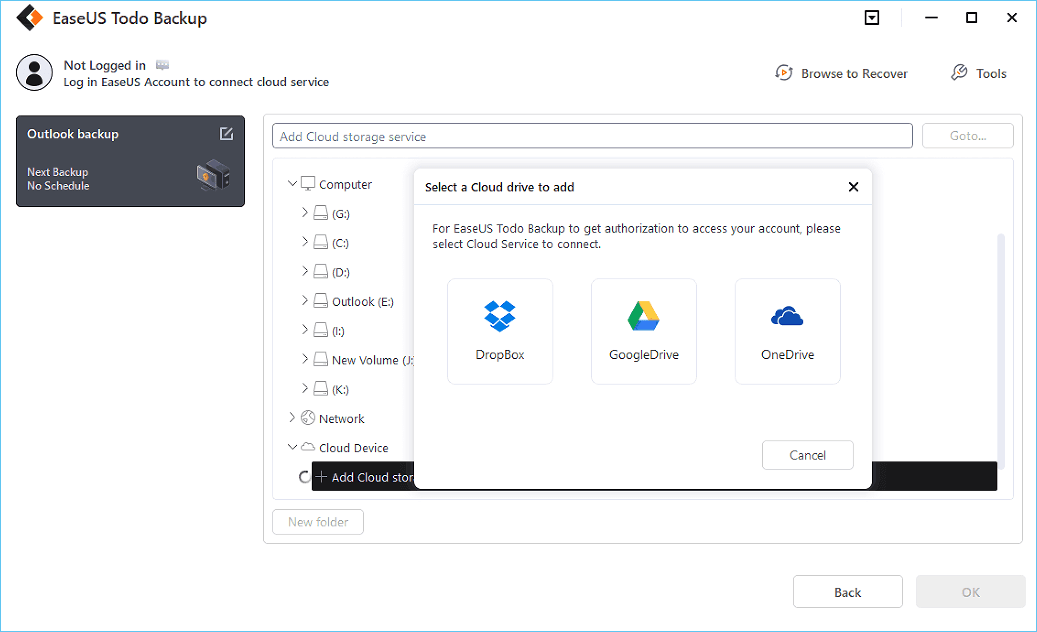
You can also save backups to EaseUS's cloud storage service. Sign up for an EaseUS Account and log in after clicking EaseUS Cloud.
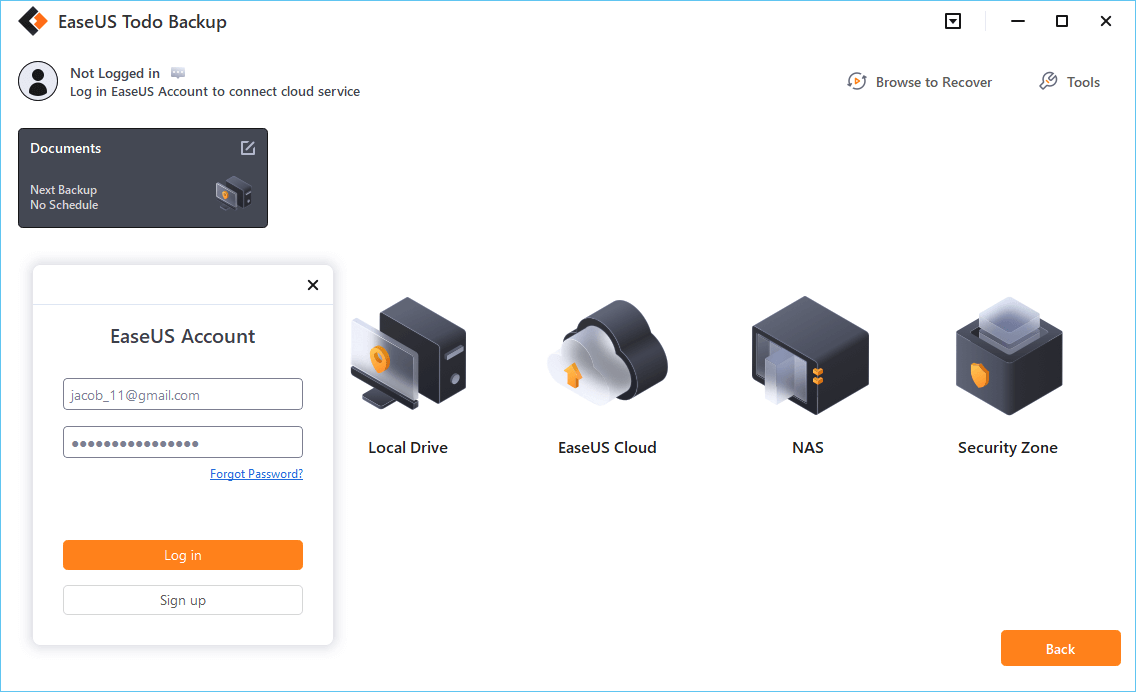
Step 7. To begin backup, click "Backup Now" Once the backup process has been finished, it will be shown as a card on the panel's left side. To further manage a backup job, right-click it.
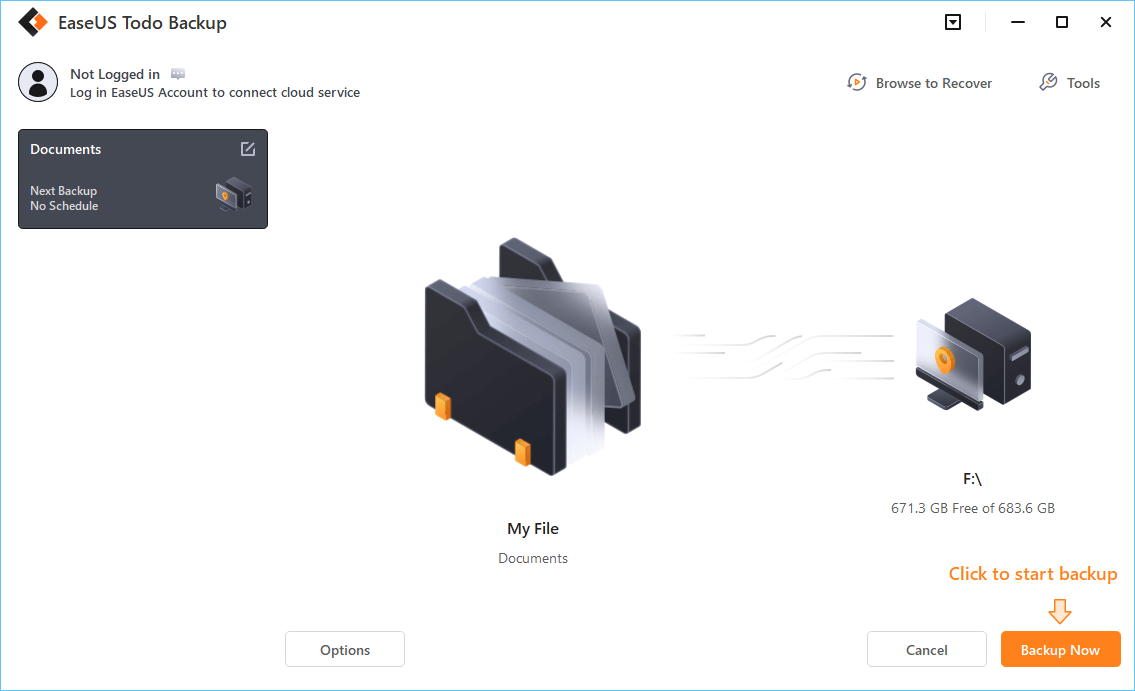
Further Reading: Clone External Hard Drive to Another External Hard Drive
Way 2. Move Files to External Hard Drive Using File History
If you don't want to use third-party software, one option is to use Windows' built-in File History. It is specifically developed for backing up Windows files to external hard drives or network destinations. File History also includes an automatic backup function, which you can configure to migrate your files to an external hard drive on a daily, weekly, monthly, or other schedule.
File History, on the other hand, backs up all files from Windows libraries by default, including desktop, contacts, documents, downloads, favorites, links, music, OneDrive, photographs, saved games, searches, videos, and so on. As a result, you must choose certain files for backup and an external hard drive.
Here's how to use File History to transfer files to an external hard disk. The procedure consists of several phases; please ensure that you complete each one correctly.
Step 1. Open Control Panel > System & Security > File History.
Step 2. Click Select Drive on the left panel, set the external hard drive ad the target location to save backups, and click OK.
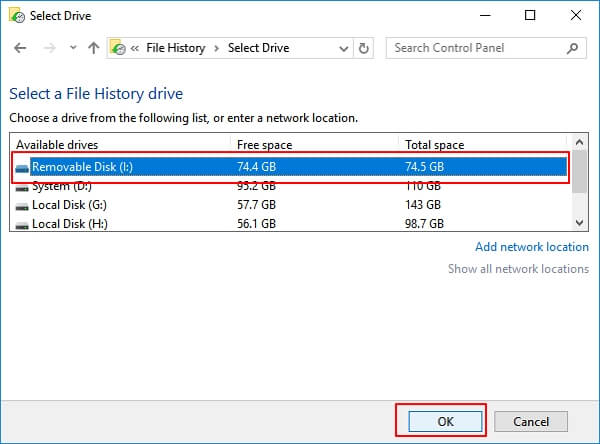
Step 3. Click Advanced Settings, you can set how often to save copies of your files by minutes, hours, or daily.
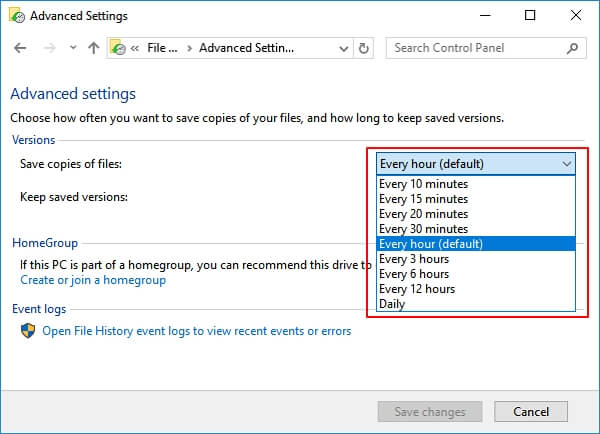
Step 4. Finally, click Turn on, the File History will automatically back up your files to your external hard drive at the set time.
Way 3. Move Files to External Hard Drive via Backup and Restore
Backup and Restore is another Windows built-in backup utility that can save files to an external hard drive. This tool is mainly designed for creating a system image and also comes with a file backup feature. If you want to transfer a specific file or folder to an external hard drive, this tool will assist you do it successfully. But the procedure requires multiple steps, which is not suitable for beginners.
Connect your external hard drive to your Windows computer, and follow the steps to move files to it with Backup and Restore:
Step 1. Click on the Start menu and type "backup" into the search box. Select Backup and Restore from the list of results. Or go to the Control Panel, and find Backup and Restore.
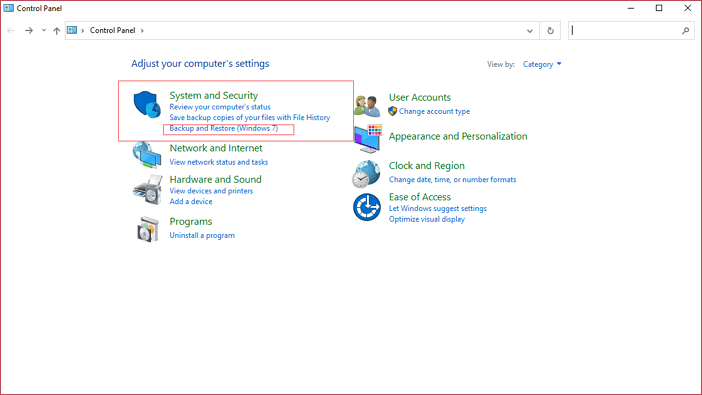
Step 2. Tap "Set up backup" and wait for the pop-up window to finish the process.
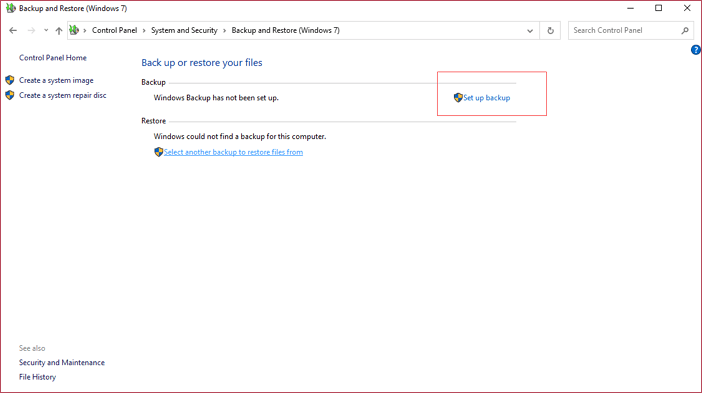
Step 3. Select the external hard drive as the destination disk.
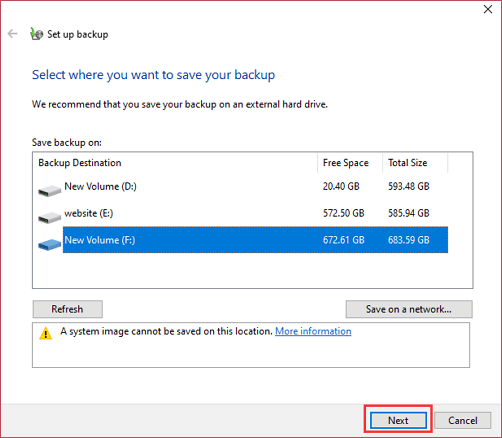
Step 4. When choosing which folder you want to back up, you need to check the "Let me choose" option, then click Next.
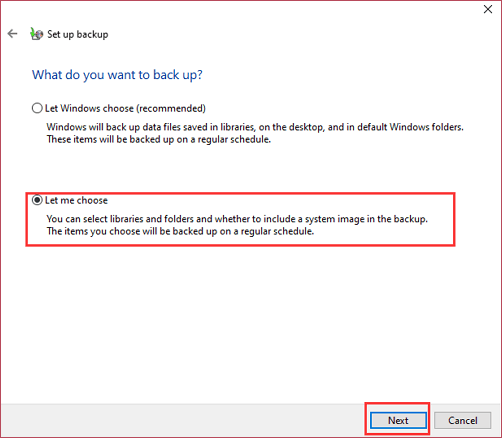
Step 5. Choose the specific folder or file you want to set backup, and click Next.
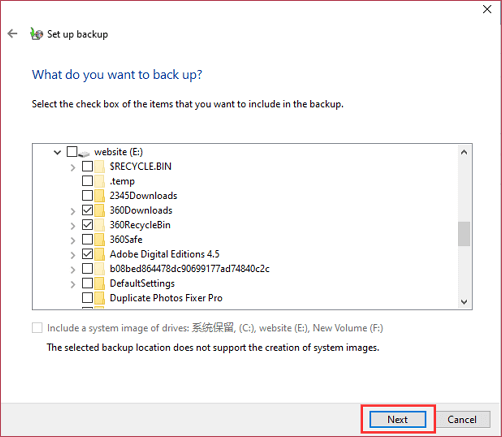
Step 6. While reviewing your backup settings, you can click "Change schedule" to customize your schedule backup based on your needs.
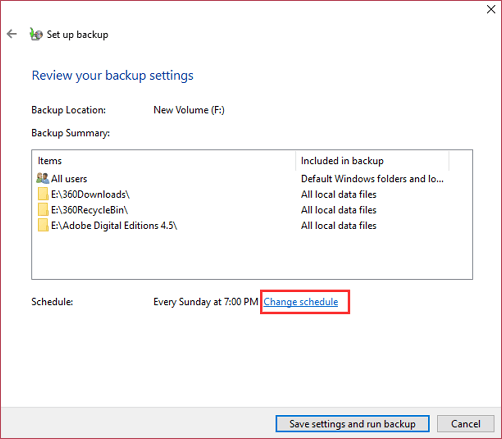
Step 7. Click OK to start your first backup process. After the first time, your PC will automatically back up files to external hard drive at the scheduled frequency.
The Final Words
Finding a simple and efficient file transfer solution would greatly simplify the procedure and save time. This section explains three different ways to move files to external hard drive without copying them, including utilizing EaseUS Todo Backup, File History, and Backup and Restore.
All three methods provide an automatic backup of files to an external hard drive while keeping the original file intact. Because of its straightforward operation and clear user interface, EaseUS Todo Backup is the most recommended. You won't be disappointed if you download it and give it a try.
Secure Download
FAQs on How to Move Files to External Hard Drive Without Copying
Here are some of the frequently asked questions about this topic, refer to them if you have the same doubts.
1. How do I permanently move files to an external hard drive?
If you want to permanently move files to an external hard drive, use the cut-and-paste method. Pick the files to be moved, right-click, and pick "Cut," then travel to your external hard drive, right-click, and choose "Paste." This procedure will move the files to the external hard drive without making further copies on your computer. To avoid data loss or corruption, make sure the transfer is complete before detaching the external hard drive.
2. How do I transfer a lot of files at once?
To transmit a large number of files at once, you can use a file transfer program or create a zipped folder. To compress files, pick all of the files to be sent, right-click, select "Send to," and then "Compressed (zipped) folder." This will result in a single compressed file that can be transferred more easily. Alternatively, you can use file transfer software such as FileZilla or SyncBack to transfer many files and folders at the same time via a network or via a USB connection. These tools simplify the procedure, reducing time and guaranteeing that a huge number of files are transferred efficiently.
4. What is the simplest way to transfer files?
Using a USB flash drive or an external hard drive is the simplest way to transfer files. Connect the USB device to your computer, launch the file explorer, and locate the files to be transferred. Then, just drag and drop the files you want to use into the USB drive. When the transfer is finished, safely eject the USB device, which is now ready to be inserted into another computer to access the transferred files. This method is simple, user-friendly, and does not require any additional software or complicated steps.
Was this page helpful? Your support is truly important to us!

EaseUS Todo Backup
EaseUS Todo Backup is a dependable and professional data backup solution capable of backing up files, folders, drives, APP data and creating a system image. It also makes it easy to clone HDD/SSD, transfer the system to different hardware, and create bootable WinPE bootable disks.
Secure Download
-
Updated by
"I hope my articles can help solve your technical problems. If you are interested in other articles, you can check the articles at the bottom of this page, and you can also check my Facebook to get additional help."…Read full bio -
Written by
Larissa has rich experience in writing technical articles and is now a professional editor at EaseUS. She is good at writing articles about data recovery, disk cloning, disk partitioning, data backup, and other related knowledge. Her detailed and ultimate guides help users find effective solutions to their problems. She is fond of traveling, reading, and riding in her spare time.…Read full bio
EaseUS Todo Backup

Smart backup tool for your files, disks, APPs and entire computer.
Topic Clusters
Interesting Topics

